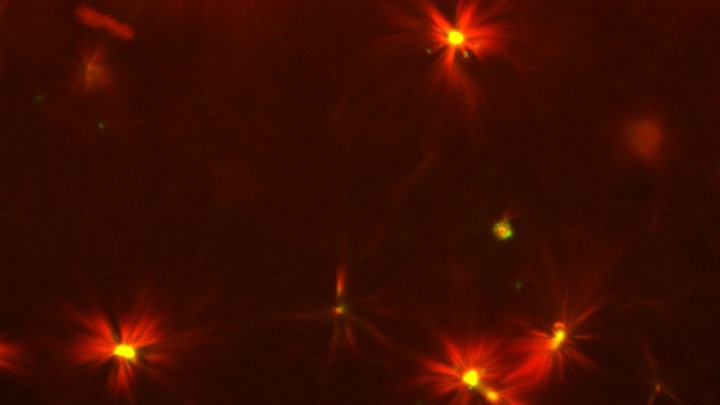
Written in the ‘stars’: scientists offer new model of vital cellular process
Researchers at the University of Michigan and Vanderbilt University are shedding new light on a fundamental cellular process — the formation of asters, star-shaped microtubule structures within cells that help cells to divide properly.
Along with demonstrating how molecular building blocks within cells interact to build these complex microtubule structures, the findings also open new doors for studying how cancer cells overcome natural cellular restraints in order to continue their runaway cell division.
“We found that the organization of the microtubule structure, or cytoskeleton, within each cell is modulated by this building block of microtubules itself, a protein called tubulin,” says co-senior study author Ryoma “Puck” Ohi, Ph.D., an associate professor of cell and developmental biology at the U-M Medical School and affiliate faculty member of the U-M Life Sciences Institute, where his lab is located. “And we propose a new model of how the motor protein kinesin-14 can switch between two different functions — aster formation and microtubule bundling — based on the availability of this tubulin. So, rather than being two distinct processes, we found that they’re intimately interrelated.”
The findings were published July 9 in Nature Communications.
Go to Article
Microtubule minus-end aster organization is driven by processive HSET-tubulin clusters, Nature Communications. DOI: 10.1038/s41467-018-04991-2


